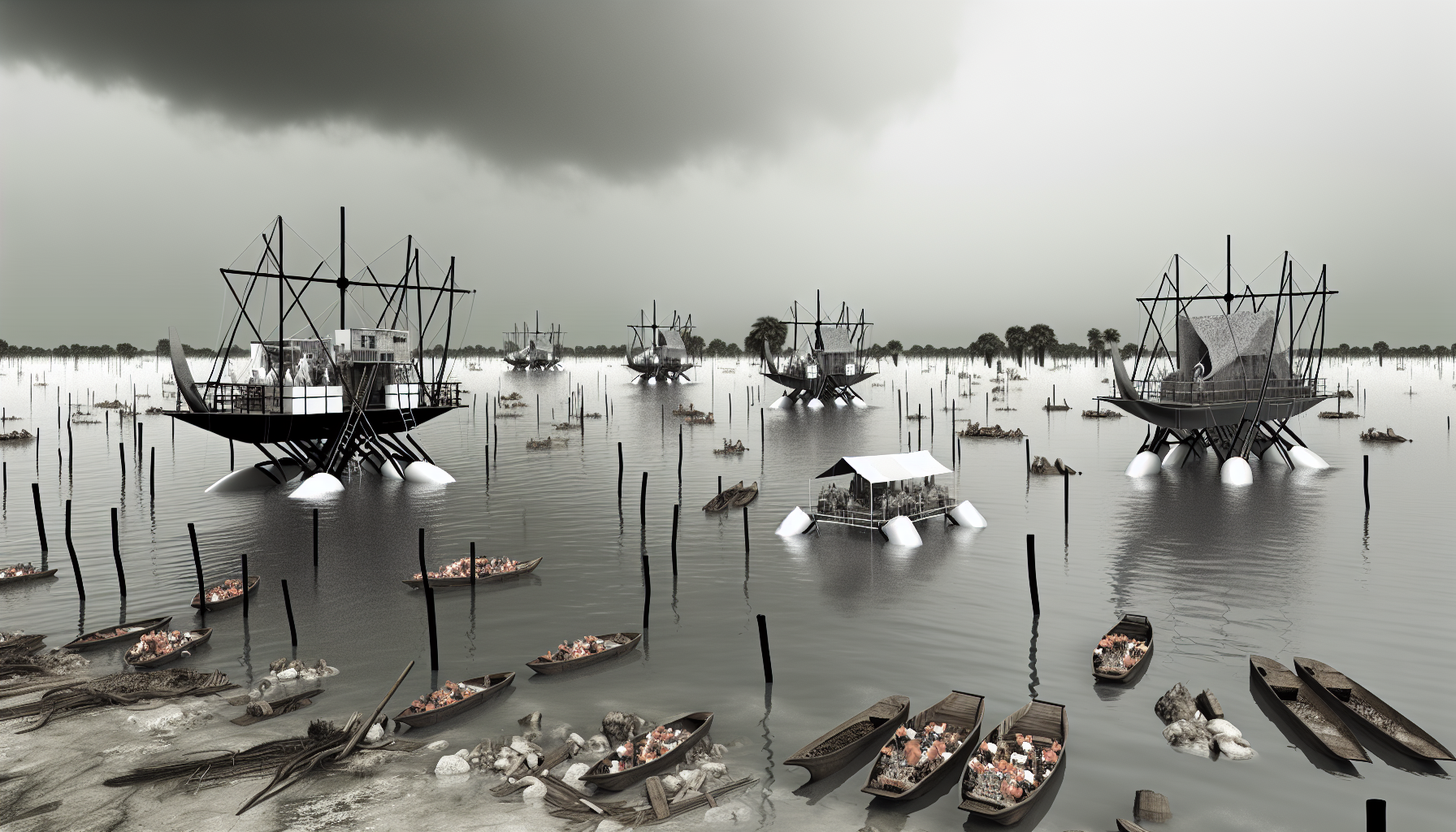In a world where vast stretches of once-thriving cities now lay dormant beneath relentless, rising tides, hope seems but a fickle whisper among the waves. Yet, within the aqueous tomb of what we once called home, a pulse still yearns to beat—the resilience of coastal cultures battling the suffocating embrace of the sea. Our recent exploration of the ‘New Atlantis’ unearthed a poignant reflection of society adapting to an inevitable aquatic existence. Today, we delve deeper, questioning if ‘Tidecraft’ can become the lifeboats of these drowning traditions.
Tidecraft, a term borrowed from the mariners of yore, now denotes a myriad of ingenious aquatic vehicles and floating platforms. These modern-day arks are not merely vessels for survival; they represent a testament to human ingenuity and creativity in a world half-submerged. Hand-crafted houseboats, buoyant farms, and amphibious marketplaces paint a vibrant picture amidst the monochrome floodwaters, revealing a strobe of life flickering defiantly against the shadow of waterworld existence.
The question is not of the existence of these Tidecraft but of their efficacy. Can they truly salvage the rich tapestry woven by generations upon the now inundated shores? Anthropologists warn us of the subconscious dismantling of cultural identities, where daily survival overshadows the ceremonies and stories that once colored these communities. Yet, Tidecraft stand as bastions of adaptation, allowing fishermen to ply their trade atop the abyss, and farmers to reap harvests from floating gardens—a semblance of normalcy preserved on the crests and troughs of their newfound briny fields.
As the sun sets on the drowning cities, we witness celebrations aboard the Tidecraft, a testament to the unyielding human spirit. These rituals, though morphing to fit their wetter stage, are alive with the music of resilience. ‘On the water, we dance not solely for tradition but to stir the very water beneath us into rememberance,’ shares Mariana, a matriarch who has watched the sea devour her ancestral land.
But let us not be lulled into romanticizing this dire state. The very culture that bloom upon these bobbing habitats is a eulogy to terrestrial heritage lost. These communities float upon the grave of the world as we knew it, and nothing can replace the intricate connection between man and the earth that has been washed away.
Experts debate the sustainability of Tidecraft communities. Doubt roots itself in the saline-soaked soil: how long before resources become as scarce as dry land? Floating solar arrays and desalination plants show promise, but the looming specter of resource contention cannot be ignored. ‘Tidecraft may carry our culture for now, but without broader change, they may merely be vessels ferrying us toward a silent finality,’ cautions a climatologist who has witnessed the relentless ascent of the tides.
In the heartrending beauty of a floating lantern festival, where each light signifies a plea for continuity, the undeniable truth of our current existence glimmers starkly. Tidecraft, those arks of hope, could indeed be the lifeboats of cultural continuity for the time being. Yet, they drift in an expanse of uncertainty, where each buoyant triumph is but a small defiance against a tide of overwhelming change.
As night descends and the lanterns become mere specks against the indigo inevitability, one cannot help but ponder: have we relegated our legacies to mere memories aboard these tide-borne vessels? The narrative of Tidecraft is still being written, a narrative where the resolute beat of survival fights to synchronize with the mournful dirge of what we’ve lost to the depths.
